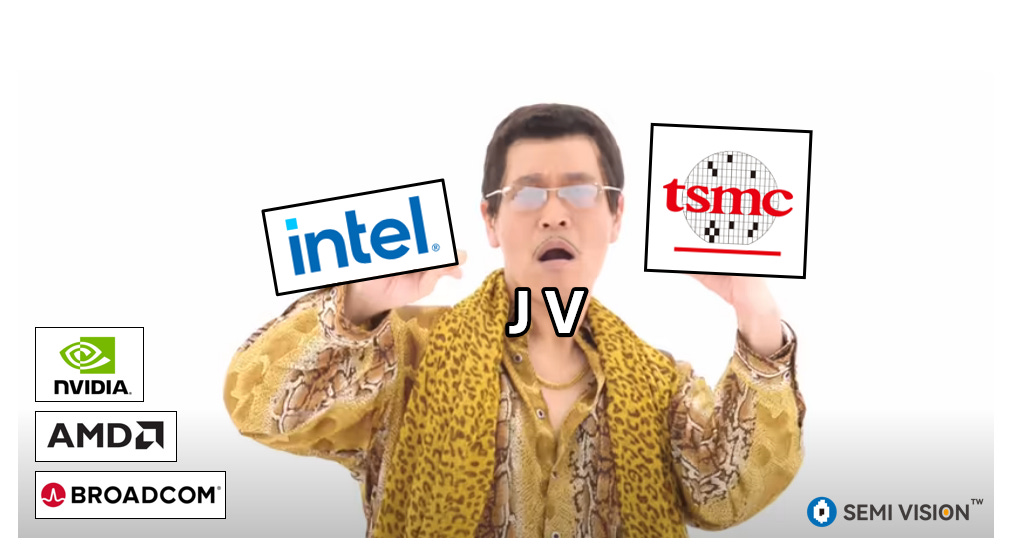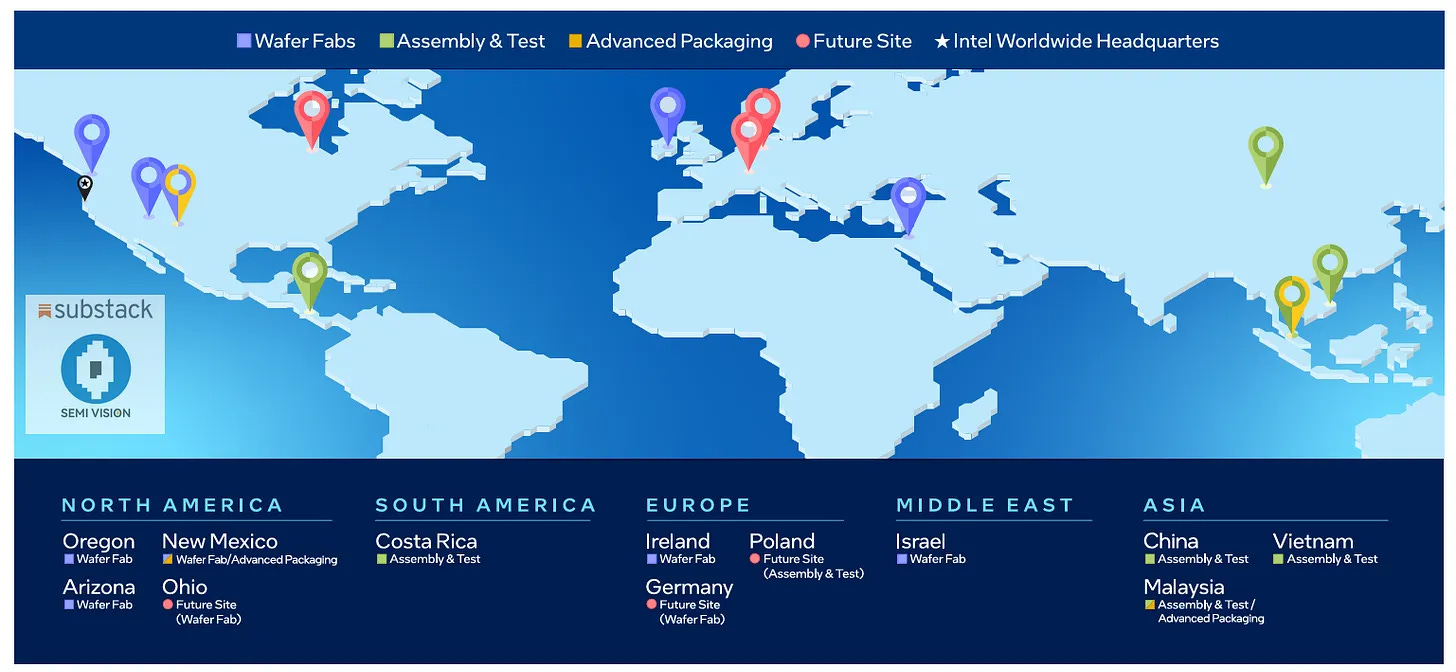SemiVison: TSMC and Intel JV possible?
Original Article by SemiVision Research
After TSMC increased its investment in the U.S., there is now a new concept emerging regarding the potential collaboration between TSMC and Intel. Currently, SemiVision Researcher is analyzing the current situation of both TSMC and Intel to help readers understand whether there is a possibility for TSMC to form a new company with other companies in the future.
This is still a topic of discussion, and the final outcome remains to be officially confirmed. Here, we are only analyzing the current status.
Below is a concise analysis of the possible scenarios, taking into account both companies’ investment histories, cultural and operational challenges, and the political/regulatory landscape-particularly in Taiwan.
The Ever-Shifting Relationship Between TSMC and Intel: A History of Competition and Cooperation
For paid members, we will provide updates on the current progress of Intel and TSMC, along with insights from SemiVision Researcher.
TSMC’s U.S. Strategy from its board's announcement
Intel current status, security risk and possible strategies
Intel task priority Stop the Bleeding
TSMC and Intel JV analysis
Arizona “Takeover” Idea
Taiwan’s Current Regulatory Framework on Advanced Technology Export
General Principle: “N-1” Rule
Potential Impact on a U.S. JV for N2 (or Below)
TSMC’s U.S. Strategy from its board's announcement: TSMC’s U.S. strategy focuses exclusively on ventures and expansions where TSMC retains full operational control.
Conservative Approach: TSMC’s Board of Directors adopts a highly measured, strategic stance when evaluating any overseas investment. By thoroughly vetting each potential expansion, TSMC safeguards its operational autonomy and proprietary knowledge. This cautionary approach ensures that every new facility, partnership, or collaboration strictly adheres to TSMC’s core principles and long-term business objectives.
Focus on the ongoing U.S. Investment: Rather than entertaining shared or partially controlled joint ventures, TSMC continues to channel resources into its wholly owned Arizona fabs as the flagship of its American manufacturing footprint. This commitment to a single, centralized campus leverages existing infrastructure, builds on established teams, and helps maintain the superior operational standards that have become synonymous with the TSMC brand.
Preservation of IP and Operational Control: Protecting intellectual property (IP) lies at the heart of TSMC’s business model. The company’s advanced manufacturing processes, trade secrets, and quality controls underpin its global leadership in semiconductor technology. TSMC’s conservative governance prevents any arrangement that might compromise these assets, underscoring the importance of fully controlled expansions in the U.S. to maintain trusted yields and consistent product quality.
Selective/ Controlled Collaboration: TSMC remains open to forging new partnerships and exploring cooperative endeavors, provided they meet stringent conditions that preserve TSMC’s independence. Such collaborations can include technology licensing, chip packaging partnerships, or other forms of coordinated development. But, only when structured in a way that reinforces TSMC’s operational standards and safeguards its competitive advantages.
Intel current status, security risk and possible strategies
Intel’s Cash Flow Crisis and Capex over extension:
Intel’s announced and planned investments across Arizona, Ohio, Germany, Israel, and Ireland exceed $100 billion in aggregate. Intel plans or is constructing at least six new fabs (two each in Arizona and Ohio, plus a multi-fab site in Germany), alongside major expansions and upgrades at existing sites in Israel and Ireland.
Intel’s aggressive fab buildout has strained finances, with Ohio alone requiring $10B+ for shell completion before equipment installation. Halting non-critical projects may be necessary to stabilize cash flow.
Arizona (USA): Intel invests $20 billion to build two new fabs, with construction underway for next-generation process nodes.
Ohio (USA): Intel pledges $20 billion for two initial fabs, potentially scaling up to $100 billion pending subsidies.
Magdeburg (Germany): Intel aims to invest up to $30 billion in a multi-fab site, contingent on government subsidies.
Israel (Kiryat Gat): Intel allocates $25–$30 billion for expanding or constructing new facilities, relying on local incentives.
Ireland (Leixlip): Intel commits multiple billions to upgrade existing fabs and support advanced nodes in ongoing expansions.
For paid members, we will provide updates on the current progress of Intel and TSMC, along with insights from SemiVision Researcher.
Intel task priority Stop the Bleeding
TSMC and Intel JV analysis
Arizona “Takeover” Idea
Taiwan’s Current Regulatory Framework on Advanced Technology Export
General Principle: “N-1” Rule
Potential Impact on a U.S. JV for N2 (or Below)







